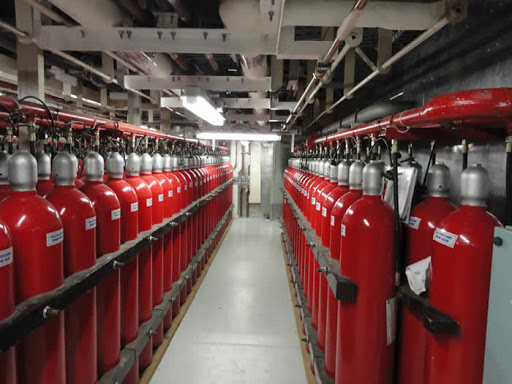Avoiding damage to the anchor system
If the paid out length of the chain has to be adjusted, or when the anchor heave-in-operations has to be started, ensure there is minimum tension in the chain.

The windlass is not designed for breaking out an embedded anchor or hauling the vessel as the motor is the “weak link” in the anchoring system.

An increase in tension will cause an increase in torque applied to the gypsy and, through the gearing, to the windlass motor. This may cause a significant increase in internal pressures in hydraulic windlass motors.
Explosive failures of hydraulic windlass motor casings have been recorded resulting in serious injury. Other catastrophic failures of windlass components have also occurred leaving the affected vessels unable to recover their anchors until repairs have been made.
To break out the anchor, lock the chain in the chain stopper.
Judicious use of the rudder and engine, and bow thruster if fitted, will assist in reducing tensions in the anchor cable to assist the windlass in recovering the cable.
A dual axis ground tracking Doppler log is useful for gauging the speed over the ground when maneuvering.

Close cooperation between the anchoring party and the bridge team is required during any anchoring operation, but in case it is particularly important.
The anchoring party should report on changes in tension, and in the horizontal and vertical direction of the cable so that the bridge team can accurately manoeuvre the vessel to the appropriate position at a sufficiently low speed.
Heaving procedure
- Start the HPU
- Supply the water to wash the anchor and cable
- Engage the cable lifter unit to the anchor winch and insert the clutch locking pin if it is not a hydraulically operated clutch
- Rotate the shaft in heave direction to take up the slack in the transmission system
- Release the cable lifter brake
- Remove the secure the chain stopper locking bolt and locking pin if there is one.
- Open the chain stopper dog/guillotine bar.
- Start to haul in the anchor in low speed mode. Remember the vessel should be maneuvering towards the anchor, not ht winch pulling it.
- Operate the windlass carefully not to apply excessive external force (especially in heavy weather), otherwise the motor and other equipment’s may be damaged.
- Move the vessel so that the anchor chain is “up and down” into water during the heaving operations.

- If the anchor chain becomes inclined as per below figures, immediately stop the heaving operation and tighten the brake of gypsy wheel and disengage the clutch. Move the vessel so that the anchor is hanged “up and down” down vertically as per above figure, with the use of main engine and thrusters. Then restart the heaving operation.

In case that the windlass slows down or stops during heaving operation, it shows that excessive load applies on the windlass.

- In case that the anchor bites into sea bottom as shown in above figure, put a chain stopper and move the vessel in order to pull out the anchor from sea bottom. Never attempt to pull out by heaving force of windlass.
- Reduce the speed before the anchor reaches the hawse pipe.
- When the anchor and flukes are properly stowed, stall the hydraulic motor while applying the band brake. Release the control lever once the cable lifter brake is fully applied.
- Close the chain stopper dog/guillotine bar and restore the locking bolt and securing pin if there is one.
- Disengage the winch clutch and insert the clutch locking pin, it it is not a hydraulically operated clutch.
- Shut down the HPU.
After completion of heaving up operation
- Lash the anchor with the lashing equipment and make sure that the anchor is fully secured in its “housed position”

- Check the wear of the brake lining and adjust the brake setting adjustment screw, if necessary.

- Replace all covers and weather protections, etc on spurling and hawse pipes.
- Grease all lubrication points and the open gears
- Check condition and movement of the couplings / clutches
- Defects and observations are recorded in planned maintenance system.


